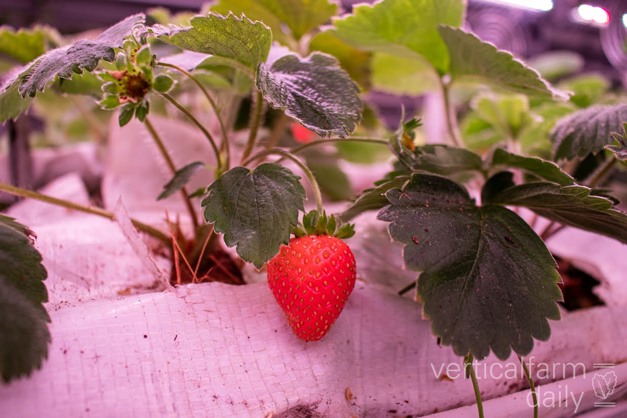Often considered a minor pathogen, angular leaf spot caused by the bacterium, Xanthomonas fragariae, can cause serious leaf and calyx infections ruining the marketability of fruit if left uncontrolled. Like all bacterium, the pathogen will infect leaves and the calyx through natural openings or wounds. Primary infections of new growth in the spring originate from systemically infected overwintered plants and dead leaves in which the bacterium survives the winter; or from infested transplants. The pathogen is very resistant to desiccation and can survive in old, dried leaves or infected plant debris buried in the soil. The pathogen will not survive free in the soil so it originates primarily from infected leaf debris and infected crowns.

Infections can often start in production operations and come in on infected bare root transplants or cuttings. Symptoms on leaves include initial small, irregular water-soaked lesions. Young, actively growing leaves are most susceptible, especially on vigorously growing plants. Disease development is favored by moderate to low daytime temperatures, low night time temperatures – near or below freezing, and high relative humidity. Long periods of precipitation, overhead irrigation used to establish plantings or protect plantings from freezing, and heavy dews favor disease development.
As disease progresses lesions will enlarge and coalesce forming reddish-brown spots on upper leaf surfaces which later become necrotic and translucent (Fig. 2). Holding infected leaves up to the light will reveal this diagnostic feature. Heavily infected leaves may die, especially if major veins become infected. Bacteria exuding from leaf spots under high moisture conditions can act as secondary inoculum and are spread to healthy plants by splashing rain, overhead irrigation, and during harvest. The pathogen can enter the plant via natural openings in the leaves or wounds while suspended in drops of dew, guttation fluids on the margins of leaves, rain, or overhead irrigation water.
Importantly, in severe outbreaks in the spring, the bacterium can spread to fruit causing the calyx to turn brown and dry out ruining the marketability of infected fruit.
Strawberry plantings should be scouted on a regular basis, especially if overhead irrigation has been run or persistent rainfall has occurred. Conventional or organic copper-based products can help suppress the development of ALS, and should be applied at a low rate to avoid phytotoxicity in leaves. Weekly, preventative applications of 0.3 lb fixed copper have been shown to be effective in reducing ALS if applied early enough when disease pressure was still low. Apply copper only on days only when leaf drying can occur. Discontinue copper applications if phytotoxicity injury occurs, this usually occurs after 4 to 5 applications. Scout fields after each copper applications for injury.
Source: plant-pest-advisory.rutgers.edu
